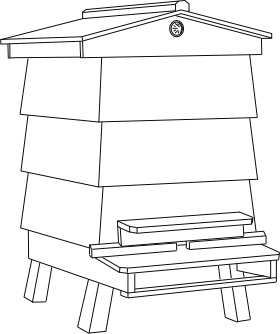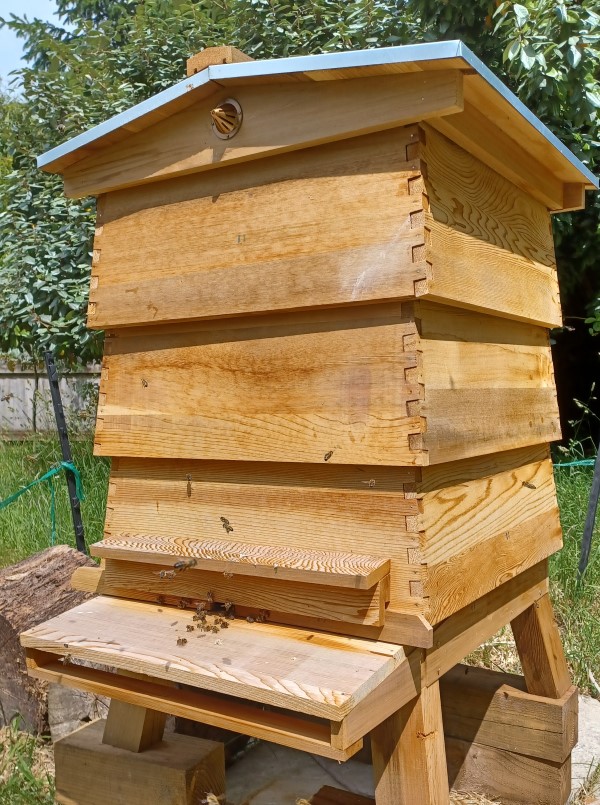WBC
The WBC hive was designed in 1890 by William Broughton Carr. It is classified as a double walled hive and is the iconic image of a hive, usually painted white.
The inner boxes are made of thinner timber than the National, making it lighter.
The WBC brood chamber takes 10 long lug frames compared to 11 in the National hive. The frames are identical. Similarly, the WBC supers take up to 10 National super frames.
| HIVE DATA | NATIONAL | NATIONAL 14×12 | W B C | COMMERCIAL |
|---|---|---|---|---|
| Brood frame | 14″ x 8½” | 14″ x 12″ | 14″ x 8½” | 16″ x 10″ |
| Super frame | 14″ x 5½” | 14″ x 5½” | 14″ x 5½” | 16″ x 6″ |
| Frames / brood box | 11 | 11 | 10 | 12 |
| Cells / brood box | 54,000 | 80,000 | 49,000 | 80,000 |
| Lug length | 1½” | 1½” | 1½” | 5/8″ |
The outer boxes or lifts act as protection for the inner hive. Thus there is double the amount of work moving boxes during inspections. This is offset to some extent by the extra protection afforded by the lifts.
WBC hives have the same capacity problem as Nationals so it is not surprising that a WBC brood box may be purchased to take 14 x 12 frames (note that an extra lift will be required). Or you could use double brood boxes for prolific colonies.
Other points to take into consideration:
- The pitched roof makes it difficult to turn upside down and rest hive parts on, but the lifts can be removed, stacked to one side and used instead.
- The protected inner boxes do not need paint or other wood preserver.
The drawing below is a typical WBC hive with sliders to vary the entrance width.

Click the hive below for an internal view

